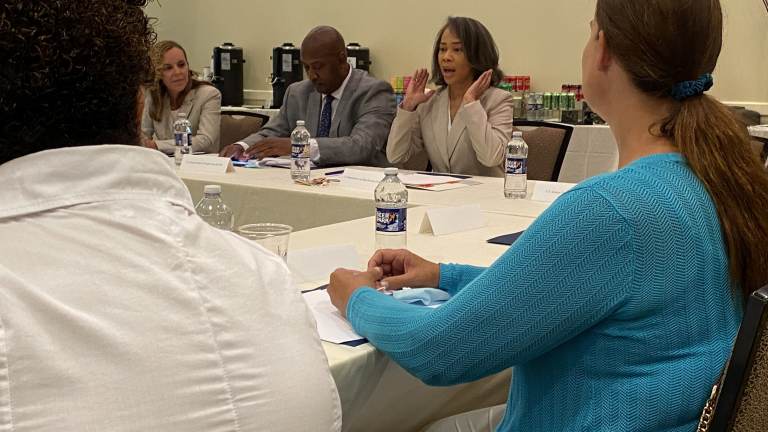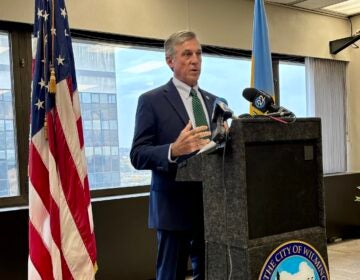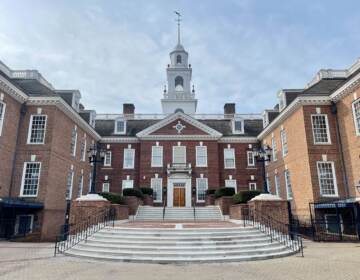Effort to cap I-95 through Wilmington gains momentum
Federal and state lawmakers met with community leaders to outline plans to reunite Wilmington neighborhoods divided by I-95 decades ago.

Delaware Congresswoman Lisa Blunt Rochester talks about plans for the future of I-95 in Wilmington during a round table community meeting Monday afternoon. (Mark Eichmann/WHYY)
Earlier this year, a group of state lawmakers from Wilmington urged Delaware’s federal delegation to support the idea of putting a cap on top of I-95 to reconnect city neighborhoods that were split in two by the highway’s construction decades ago.
On Monday, they got their wish.
U.S. Rep. Lisa Blunt Rochester of Delaware was joined by U.S. Sen Tom Carper and Congressman Dwight Evans of Pennsylvania at a roundtable discussion in Wilmington to talk about how federal money could repair the divide 95 has caused with construction of an urban park on top of the capped highway.
“Once in a generation do we have an opportunity to right a wrong, once,” Blunt Rochester said. “This is big, it’s sort of like all the stars aligned. We are now doing an infrastructure package, and all of this work has been put in. Now is the time for us to seize this moment.”
Both Blunt Rochester and Evans are co-lead sponsors of the $3 billion Reconnecting Communities bill which recently passed the House. In part, the measure will fund projects that “restore or improve connectivity, mobility, and access in disadvantaged and underserved communities.”
That language certainly applies to Wilmington’s West Side, which was cut off from the rest of downtown Wilmington when I-95 was cut through in the 60s. Cassandra Marshall, president of the Quaker Hill Neighborhood Association, says the highway has been the catalyst for disinvestment in both the physical infrastructure of the area and the people who live there.
“I see building a cap, trying to find a way to bring us all back together again, as a catalyst to bring that investment back into this city,” she said. “This is the kind of investment that we need here to bring people back into the city, to bring all of us together, and to make sure that we’ve got the kind of assets that will help build the city in the long run.”
The combination of highway construction and the nine-month-long National Guard occupation of Wilmington in 1968 dealt a devastating blow to the city’s development. State Sen. Sarah McBride says covering the highway with an open space could help undo some of that historic damage.
“I think capping 95, and reimagining 95 through the center of the city of Wilmington, is a central part of helping to heal our city, reunite communities, and allow Wilmington to grow,” she said. “It’ll advance racial justice. It will improve public health and it will foster economic growth.”
When the highway was built through Wilmington, hundreds of residents were forced out of their homes as the wrecking ball swung. Churches, stores, a brewery, and other neighborhood icons fell to make way for the road.
“The infrastructure of our past did not come without consequences,” said DelDOT Secretary Nicole Majeski. “It divided the city, it divided communities, and now, 60 years later, we have an opportunity to bring people back together.”
DelDOT is now working with the Wilmington Area Planning Council to study the feasibility of capping I-95 and gathering input from the community about what that might look like.
“To have a federal administration and U.S. Dept. of Transportation that is supportive of this initiative is just amazing. It is a once-in-a-lifetime opportunity to be able to do this and we’re thrilled to be a part of it.“
Similar legislation, co-sponsored by Sen. Carper, is now awaiting action in the U.S. Senate.

Get daily updates from WHYY News!
WHYY is your source for fact-based, in-depth journalism and information. As a nonprofit organization, we rely on financial support from readers like you. Please give today.







